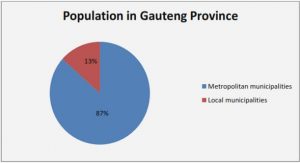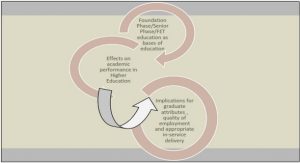Get Complete Project Material File(s) Now! »
Gandiya Era 2009- Date
During an interview with Chad on (18 August 2014), it was established that, in 1953, in the plains of Nyazura in the Eastern part of Zimbabwe (the then Rhodesia), Chad Gandiya was born to Christian parents. Having been educated at St Augustine’s Mission, Penhalonga, he was influenced by a high Anglican tradition that he later dropped in favour of the evangelical tradition he experienced at Avondale parish in Harare. He studied for a diploma in theology at African Evangelical Fellowship Mission, Chimanimani. With this theological background, he was employed as a lay worker at Avondale Parish where he worked with domestic workers that stimulated his interest in dealing with social justice issues. From there he enrolled at St John’s College, Nottingham UK, for a Bachelor of Theology degree. Returning to Zimbabwe at independence, he was tasked with youth work and evangelism while based at Avondale Parish again.
Two years down the line, he moved to Michigan, USA, where he furthered his studies in social issues. He studied Medical Ethics and lectured in world civilisation at Lansing Community College. On his return, he briefly worked as a parish priest in Marlborough and then was appointed as Academic Dean at Bishop Gaul Theological College. This was a rich moment of interacting with priests in the making. At this point, he joined the race for the bishopric of Harare that he lost to Kunonga. He found it difficult to work under Kunonga’s leadership, therefore, he resigned and joined USPG at Birmingham; UK, as a lecturer. The way Gandiya left Zimbabwe was hurtful because his resignation letter was never replied to and as a result could not be accorded an opportunity to hand over to the incoming dean. Having spent four years lecturing in Birmingham, he was transferred to manage the USPG African and Indian Pacific Desk for five years. It was a great opportunity to work with African bishops being exposed to the politics and pitfalls surrounding the episcopal office. In 2009 Chad Gandiya has nominated as a candidate for the See of Harare again. Gandiya consented, though he was still in the UK. He prayed for the outcome and felt ready to take up the challenge after his experience with USPG. He was elected the next bishop of Harare, a position he accepted with humility and prayer. It seems it was not an easy going position as noted in the Church of England Newspaper on 5 January 2009: The April 25 election of a new bishop in succession to the Rt. Rev. Sebastian Bakare of the Diocese of Harare has been postponed, sources in Zimbabwe tell The Church of England Newspaper.
No explanation or a new date for the canceled election has been offered by the diocese or the Church of the Province of Central Africa. Four candidates had been put forward for election: the USPG’s Africa desk officer, the Rev Canon Chad Gandiya; the vicar of Tattenhall, Cheshire the Rev. Lameck Mutate; the Archdeacon of Northern Botswana, Dr. Archford Musodza; and the vicar of Mbare parish in Harare, the Rev. Canon David Manyau.
The last election for a Bishop of Harare in 2001 was marred by the intervention of the CIO—Zimbabwe’s secret police, whom critics charged engineered the election of Dr. Nolbert Kunonga. From the start of his tumultuous episcopate, Dr. Kunonga was closely linked with the regime of Zimbabwe strongman Robert Mugabe. Members of the diocese accused Dr. Kunonga with soliciting the murder of clergy and lay opponents, theft, and heresy. An ecclesiastical trial for his alleged crimes collapsed after witnesses declined to return to Zimbabwe in fear of their safety (Conger 2009).
In the interview with the researcher on (18 August 2014), Gandiya continued by noting that coming back home to a highly divided clergy was not an easy task. The clergy relationships were full of suspicion and bitterness. Parishioners felt cheated, robbed and taken advantage of by the clergy. In some quarters, members of the clergy were regarded as foreigners who wanted to plunder the church. The first port of call was to unite the polarised Diocese, burying any previous differences. Part of this objective was achieved by organising frequent workshops for clergy and for the laity. Bishop Gandiya served three years while renting office space, the period the researcher has identified as a ‘church in exile’. The church paid over three thousand US dollars ($3000) every month on rentals as noted by the Diocesan secretary, Dzawo on (18 October 2014).
A majority of the parishes in exile mobilised their resources and acquired new land on which some constructed some structures. The bulk of other parishes spent the five-year period of exile renting prayer space spending at least $200 per week. Some congregations, however, acquired sympathisers from other Christian denominations who offered them prayer space free. In some cases, the sympathisers were also harassed by the police to an extent of being locked up in prison cells said Chibanda on (20 February 2014.) Also other denominations that, for fear of victimisation, refused Anglicans a space for refuge while yet another group found an opportunity to use the Anglican Church buildings, which lay idle as the Kunonga faction could not use the space they were holding.
Leadership Experiences due to Exile
People tend to draw close together in times of stress/anxiety (Cox 2006). Harare Anglican Diocese parishes during ‘exile’ developed a new sense of the church. The hymn Christian seek yee not repose gave the church a militant position and energy to soldier on resisting what they deemed unorthodox way of running a church. Church wardens elected into office during the time the church marched in ‘exile’ were those of military stature or those who manifested as war veterans as though they would engage in physical fighting. One case of St Columbus Parish where a guild of subdeacons paid for and erected altar rails, which they found uprooted the following morning and dumped behind the toilet block. There seems to have been a spirit of physical fighting brooding between the wardens who uprooted the rails claiming they had not authorised the development (though the rector had authorised it) reported Gwende in an interview on (31st March 2016). The researcher deduces conflict in centres of power –the rector’s visa-vis warden’s authority. The bishop as the chief pastor in the Diocese shares his authority with the rector who exercises that authority in the day-to-day running of the parish.
Systems theory explains that families or groups are held together by emotional forces similar to magnetic fields. As differences arise, two members tend to distance from each other and find a third person forming an emotional triangle (Friedman 1985:35-39). Typical triangles in a family are between mother-father-child or a parent and any two children with the common cause of tension being poor performance in school; substance abuse and sexual behaviour, just to list a few (Friedman 36). Emotional triangles are also common in congregations or religious set-ups such as clergy, nuns, rabbis, and their fellow core-workers. Steinke (2014:68) in his book Congregational Leadership in Anxious Times, argues that the degree of differentiation by the leader determines the outcome; either a non-anxious presence would promote creativity or high anxiety would encourage reactivity.
1 CHAPTER 1: Leadership Challenges in the Anglican Diocese of Harare
1.1 Introduction
1.2 The Problem of Leadership Style by Harare’s Post-Colonial Bishops
1.3 African King Mentality Manifesting in the Bishops?
1.4 Positive African Heritage
1.5 The Research Question
1.6 Area of Investigation
1.7 Justification of the Study
1.8 Aim and Objectives
1.9 The Anglican Church in Zimbabwe: A Brief Contextual Setting
1.10 Governance
1.11 Essence of African Leadership
1.12 The African Clan Model
1.13 The Research Gap
1.14 The Case of Anglican Bishops in Independent Zimbabwe Unfolded
1.15 Methodology
1.16 Primary Sources
1.17 Method of Collecting Data
1.18 Literature Review
1.19 Conclusion
Chapter Outline
2 CHAPTER 2: The Anglican Church Life 1980-2013 Elaborated
2.1 Introduction
2.2 Zimbabwe’s Church & State Relationship Background
2.3 The Issue of Democracy
2.4 Level of Democracy in the Anglican Church
2.5 Acts of Corruption
2.6 Leadership Succession
2.7 The Hatendi Era 1981-1995
2.8 Jonathan Siyachitema 1995-2000
2.9 The Electoral Process in 2000 – A Racial Contest?
2.10 Bakare Era 2007-2009
2.11 Gandiya Era 2009- Date
2.12 The Bishop’s Roles
2.13 Conclusion
3 CHAPTER 3 Why Is It Happening This Way? Interpretation of Leadership Styles in Africa
3.1 Introduction
3.2 Why Is It Happening This Way?
3.3 Abuse of Power in Israel
3.4 Misuse of Power by Bishops in Aquitaine
3.5 Leadership Structure in the Church of The Province of Central Africa
3.6 National Leadership
3.7 Conclusion
4 CHAPTER 4 Interpretive -Normative Link
4.1 Introduction
4.2 Statistical Analysis
4.3 The Statistical Findings in Context
4.4 Conclusion
5 CHAPTER 5 Alternative Biblical Leadership Styles -The Normative Way
5.1 Introduction
5.2 The Jethro Model of Leadership
5.3 Research Findings vs the Jethro Model
5.4 Various Kinds of Leadership
5.6 The Heart of Leadership As Modelled by Acts 20: 18-35
5.7 The Good Shepherd Model
5.8 Relational Leadership in Jude
5.9 Leading While Being Led
5.10 Power and Authority in Selected Texts of the New Testament
5.11 A focus on three Normative Issues
6 CHAPTER 6 Servant Leadership as a Normative Task
6.1 Introduction
6.2 What is Servant Leadership?
6.3 Attributes of Servant Leadership
6.4 Servant Leadership Theory Criticism and Support
6.5 Support of the Theory
6.6 Jesus Christ’s Servant Leadership Model
6.7 Contextualising Servant Leadership to Zimbabwean
6.8 Conclusion
7 Chapter 7 Synthesis Suggestions and Recommendations
7.1 Synthesis
7.2 Summary of Findings
7.3 Conclusion
7.4 Suggestions and Recommendations
8 References
9 Appendices
9.1 Appendix i: Academic Questionnaire Sample
9.2 Appendix ii: Consent letter
9.3 Appendix iii: Mukunga
9.4 Appendix iv: Neill disgruntled by Kunonga’s Election
9.5 Appendix v: Complaint and Charge Sheet
9.6 Appendix vi: Stumbles on Charges against Kunonga






